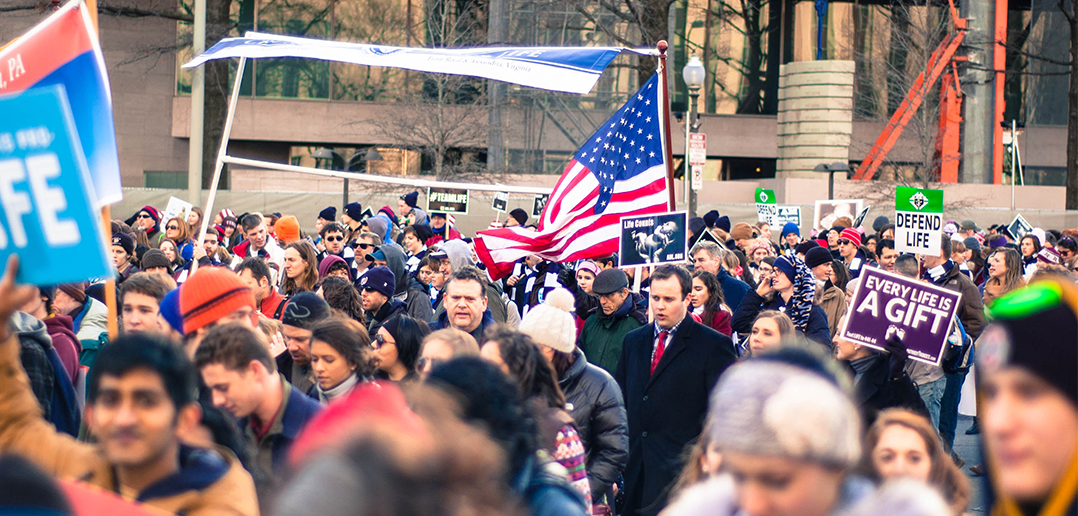
On January 24, 2008, my very first piece of professional writing was published. Marking a controversial foray into a several-year position as a columnist and blogger at InsideCatholic (later to be re-branded under its original name, Crisis Magazine), I told anyone who cared to listen why I had not attended the March for Life just two days before:
Operating within its Constitutional limitations, the Supreme Court should never be swayed by the protests and opinions of the public. It is not an elected body. If it oversteps its bounds by creating new laws or rights out of whole cloth, wouldn’t we be better off urging it to return to its Constitutional role than trying to exploit its improper activism for our own ends? Shouldn’t we want a court that does what it’s supposed to do as defined by the Constitution, rather than follow the whim of popular opinion, even if that opinion happens to be your own?
The unquestionably pro-life Justice Antonin Scalia addressed a similar concern in his opinion in Planned Parenthood v. Casey:
In truth, I am as distressed as the Court is… about the “political pressure” directed to the Court: the marches, the mail, the protests aimed at inducing us to change our opinions. How upsetting it is, that so many of our citizens (good people, not lawless ones, on both sides of this abortion issue, and on various sides of other issues as well) think that we Justices should properly take into account their views, as though we were engaged not in ascertaining an objective law, but in determining some kind of social consensus. The Court would profit, I think, from giving less attention to the fact of this distressing phenomenon, and more attention to the cause of it. That cause permeates today’s opinion: a new mode of constitutional adjudication that relies not upon text and traditional practice to determine the law, but upon what the Court calls “reasoned judgment,” ante, at 849, which turns out to be nothing but philosophical predilection and moral intuition.
Pro-lifers in this country are rightfully desperate to end abortion, but in the process some have lost sight of the proper relationship between ends and means. The sense of urgency is natural, but we must proceed with caution if we do not wish to undermine the very work we are trying to accomplish.
In short, I made a political argument for why I had grown weary of the March – despite admitting later in that same article that any real legislative change against abortion would “require a massive change in the hearts and minds of the American people.”
I wasn’t wrong. But I was missing something.
Click here to listen to our full podcast on the 2015 March for Life, including interviews with marchers!
As a political statement, the March for Life fails to have a real impact. Those who don’t live in the Washington, DC metropolitan area may not fully understand just how accustomed residents are to marches, protests, foot-races for causes, rallies, parades, and the like. The reasons for these disruptions become merely circumstantial. Our attention to them is limited to the pragmatic: are they going to add time to our already worst-in-the-nation commute, and which roads do we have to take to avoid them? Combine this with the effective media blackout on the March, and what you are left with is a twist on the old joke:
“If half a million people March on Washington for a cause but nobody covers it in the media, does it make a sound?”
In addition to my growing conviction that it was an ineffectual spectacle, when I wrote that piece I had also grown weary of the feeling of discord at the event. Some prayed their rosaries, some sang loud songs, some screamed out chants, others banged on drums. Nobody seemed to be on the same page. From the sidelines, gruesome pictures of aborted children were pointed in our direction, as if somehow we didn’t fully understand why we were there and making it even harder for parents to explain to their children. The bearers of those signs, often as not, ranted angrily about things everyone present already knew. I found myself not infrequently tempted to yell back.
For some reason, though, I decided to go back to the March with my family in 2014 – for the first time in the better part of a decade. In my return to the blustery exuberance shown each January 22nd on Constitution Avenue, I saw something with new eyes. Then a father of six (very cold) children, I was no longer in attendance as a disenchanted college grad finding my own political ideology. I was an older man – closer to 40 than 30 – seeing an ocean of young, joyful faces, marching for the noblest of causes: the defense of innocent life. Now at an age where I can no longer easily distinguish the appearance of those in high school from those in college, I recognized instead that an overwhelming number of those present were, at the very least, under the age of 25. And of those, I would venture to say that the majority were young women.
I went again in 2015 — this time, alone — spending my time capturing the energy of the March in photographs and interviewing people I ran into on the street to find out what this event means to them. I’ll include a couple of excerpts here, with more in-depth coverage in our next podcast.)
A realization dawned on me: maybe it doesn’t matter if anybody else knows that the March is going on. Those present know, and for most, it may be the only tangible experience that there are hundreds of thousands of others just like them who believe just as strongly that abortion is not an option in a civilized world. Considering what they face in their schools and future workplaces, this recognition — which I take for granted — is new and invigorating for them. It energizes the passion with which they will face down the seemingly hopeless bloodbath of this court-sanctioned massacre and give them the courage to fight on, until this scourge becomes a painful memory; a black mark on history that none should ever be allowed to forget.
Even at my most cynical, I never advocated abandoning the March. To do so would be tantamount to waving the white flag of surrender. An event that for 44 years has managed to escape all but the most cursory notice of the secular news media would at once become the biggest story in the world. Our numbers — chronically and almost comically understated when reported on at all — would balloon to a figure of millions.
They would wax triumphant about how, sensing the futility of the situation, we all gave up and went home.
The March must go on. I see that now. We can quibble over our strategy to end abortion, or whether we should end at the steps of the Supreme Court instead of the U.S. Capitol. We can argue about the most effective legislative agenda, or whether there is any workable political solution at all.
The March isn’t for everyone. It doesn’t replace activity at the local level, the courageous raising of large families, praying at clinics and offering sidewalk counseling, and praying unceasingly. It’s not a once-a-year checkbox for pro-life activity, only for us to take our buses home with a sense of satisfied accomplishment as we slip back into the banalities of daily life. But for those who are able to make it to the March, we will not give up. It stands as the single most visible testimony against the crimes of our nation – even if they look away. We will come — we will always come — and speak for those whose voices have been silenced. We will bring our children into this rite of passage – our children who mark the third generation of survivors of the American Holocaust.
We are entering a new age. An age where the old gatekeepers can no longer contain and control the message. We will come, an army of those who love life, precious life, with our cell phones broadcasting millions of images and videos, our hashtags taking over social media, our stories being published in places that those who want to stomp out our message can’t control. Already in the two years since the March for Life has come under new leadership following the passage of the noble and tireless Nellie Gray, we have seen an organization that has begun to step boldly into the 21st century. New strategies will emerge. New heroes will rise. New hearts will be changed, bit by bit.
In the words of the civil rights movement before us, “We shall overcome.” I don’t know what it will look like, or what hardships and setbacks we will have to endure along the way, but we have Our Lady’s promise at Fatima: “In the end, my Immaculate Heart will triumph.”
Until then, we’ll march on.
Originally published on January 27, 2015. This post has been updated.











































